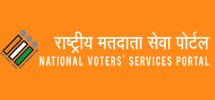Menu
- Home
- High Commission
- Consular
- Indian Community Welfare Fund (ICWF)
- e-visa
- Bank Details and Timings
- Passport Services
- Visa - Foreign Nationals
- Visa - Lesotho National
- Misc. Consular Services
- OCI/PIO Cards
- FAQs
- Emergency Cases & Contacts
- Types of Visas and their requirements
- Application Forms
- Renunciation of Indian Citizenship
- Registration of Indian Nationals
- Registration of Indian Students
- e-Clearance for Afterlife Remains (eCARe)
- Citizen Charter
- Open House Service
- Bilateral Relations
- Comm. Representative
- Consulates
- Media
- RTI
- India Links
- Contact

















